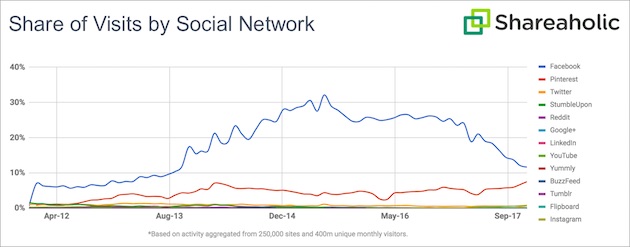
Love them or loathe them, blogs are still alive. And they’re kicking butt in the digital world.
Marrying search and social, blogging remains a sustainable way for marketers to drive qualified visitor traffic to your website and landing pages.
Unlike the whimsical online diaries of the past, business blogs should be a well-planned part of your content marketing strategy.
By offering useful and practical tips through your blog, you can grow your online audience, build trust, deepen engagement and generate leads. Plus, you can position your brand favourably in the eyes of your potential customers.
Wish to get your blogging habit off to a good start?
Consider adopting these 11 easy steps.
1) Do a ROAM Analysis
Conceived by Josh Bernoff in his book Writing Without Bullshit, the ROAM analysis is a great way to start-off your blogging journey.
ROAM stands for Readers, Objective, Action and iMpression. You can do one for your blog as follows:
- Readers: Who are your potential and current customers? Consider building your customer profile.
- Objective: What do you wish to accomplish? Often, our role as a business blogger is to make our customers smarter and wiser.
- Action: What is the action you want them to take? Readers could subscribe to your email list, share your article, or check out your products.
- iMpression: How would you want them to think of your company? Naturally, you’d want them to consider your company as a helpful expert in the trade.
Once you’ve got this, consider writing a target sentence. Here’s an example from Bernoff’s book:
After reading this blog post, potential and current customers will learn something, share our blog post, check out our products and services, and think of our company as helpful.
2) Build Content Pillars
The most prolific and productive business bloggers do not write on a whim and fancy. Instead, they create what are called Content Pillars.
According to this definition by Kapost…
A content pillar is a substantive and informative piece of content on a specific topic or theme that can be broken into many derivative sections, pieces, and materials. Examples of content pillars include eBooks, reports, and guides.
By structuring your content according to content pillars, you can brainstorm a repository of topics that you can write about in advance. This allows you to structure your series of blog posts to build up a larger report or guide that you can use as a lead magnet for your content marketing efforts.
3) Inject What’s Trending
Occasionally, it makes sense to ride on the latest waves of public interest. Also known as newsjacking, it is a great way for content marketers like you to tap on what’s current amongst your readers.
There are two tools you can use here:
- Google Trends. Visit the Google Trends website specific to your country (eg trends.google.com.sg) and see what are the top trending topics for today. Write a blog article related to that topic.
- Twitter Trends. Check out what’s trending on Twitter (hashtags or topics), and write a blog post related to that.
4) Focus on Titles and First Sentences
First impressions last. Especially in the crowded world of content marketing.
To ensure that your blog post gets the attention it deserves, front-load your headlines and first few sentences with impactful phrases and points that will hook your readers.
Ann Handley (author of Content Rules) wrote in her book Everybody Writes that 80 percent of your readers will read the headlines and only 20 percent will read your body copy. Hence, it makes total sense to hone in on your titles and first sentences.
5) Structure Your Content
The best blog articles are designed, engineered and built. They contain bullets, lists, sub-heads, images, videos, useful links, and other “visual” formats to break down walls of text.
This is good for your audiences as it makes your blog post easier to read.
And don’t forget to bold, underline, italicise, or use numbers to accentuate your post.
6) Write Like How You Speak
Please don’t write a blog post like a thesis. Or a management report.
Instead, use the active voice in your prose, with words like “I” or “you” or “we.”
Avoid jargons and complex words like the plague. Instead, write like how you’d talk to another person in a face-to-face conversation.
7) Include an Image (or 10)
Almost all my blog articles have a photo, illustration, or infographic. Often, they help to illustrate a complex point, make it easier for readers to grasp a visual concept, or add visual variety to my prose.
A picture can also paint a thousand words. Consider the example below – which would you prefer?

Courtesy of MotoCMS
8) Promote on Social Media
Write it and they’ll come? Not a chance!
With the sheer amount of online clutter on our screens these days, only the most ardent content promoters survive.
Here’s how you can do so without being obnoxious or spammy:
- Incorporate an automated email to your subscribers whenever you publish a new blog post
- Craft a short Facebook post and share it when you first publish your blog post
- Tweet about your blog post at least 3 to 4 times during the week. Choose different time zones
- Pin an image on your blog post to a relevant board on Pinterest
- Write a short summary of your key points and publish it on LinkedIn. Include a link back to your article.
- Drop a message to your employees, partners and associates to read and spread your blog article
9) Engage with and Promote Others
Reciprocity is one of the cardinal rules of influence proffered by Robert Cialdini. You scratch my back, and I’ll scratch yours.
In the hyper-competitive world of content promotion, bloggers who like, comment and share the posts of other bloggers are more likely to be noticed. In time, they may be rewarded with a positive response from others around them.
Make it a point to read other blogs or social media posts on Facebook, LinkedIn or Twitter. Leave a comment, share their posts, or retweet them.
You may also wish to promote the work of a respected influencer in your field. Doing so gets you noticed, and could pay dividends in the future.
10) Think of SEO Keywords
Thanks to the ever changing algorithms of Facebook, LinkedIn and other social networks, driving traffic to your blog is getting more and more challenging these days.
Organic social media traffic to link posts have dropped significantly. On the flip side, traffic from search engine results have risen.

Courtesy of Shareaholic
To address this, infuse Search Engine Optimization (SEO) elements into your blog articles. Do the following:
- Use keyword research tools like SEMRush, Google Trends, and Ubersuggest to find the best keywords (volume and competitiveness)
- Incorporate synonyms, long-tail keyword phrases and other related keywords in your content, using tools like LSIgraph.com or keyword.io
- Ensure that your blog/website is mobile friendly and loads quickly
- Build links from other high authority websites by guest blogging and sharing of your blog articles on directories
11) Include a Call To Action (CTA)
Last, but certainly not least, guide your readers on what they should do next.
Do you want them to apply what they’ve learned and share their results with you? Sign up for your course? Or maybe download your eBook?
To make your CTAs stand out, consider incorporating what we call a Johnson Box – a boxed text which draws your reader’s attention. Here’s an example below:
Conclusion
A cornerstone of effective content marketing, blogging has evolved significantly from its early days as a “web diary”. Unlike lifestyle bloggers or “influencers,” your role as a business blogger is to provide consistent and valuable content to your readers.
Begin your business blogging journey by adopting these 11 steps. Apply them across every single blog post, and watch your leads come in.
More In My Content Marketing Course
Wish to master the art and science of content marketing? Sign up for my content marketing strategy course.
Done in partnership with the amazing Equinet Academy, you’ll learn how to CREATE a winning content marketing strategy:
- Construct: Establish the right content marketing goals and roles
- Research: Analyse online content audiences and competitor best practices
- Execute: Craft and schedule on-goal and on-trend content
- Amplify: Distribute and promote content on the right channels
- Test and Evaluate: Measure content ROI to calibrate content tactics
